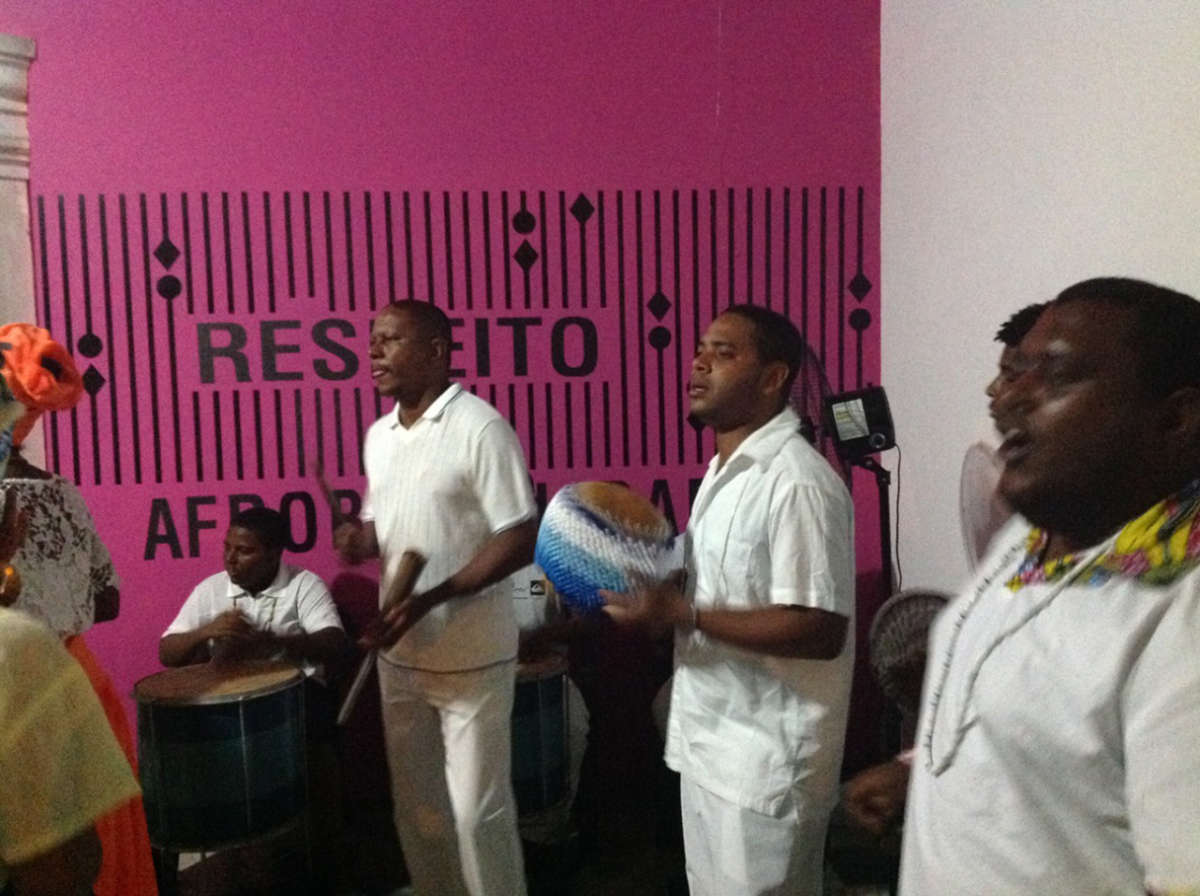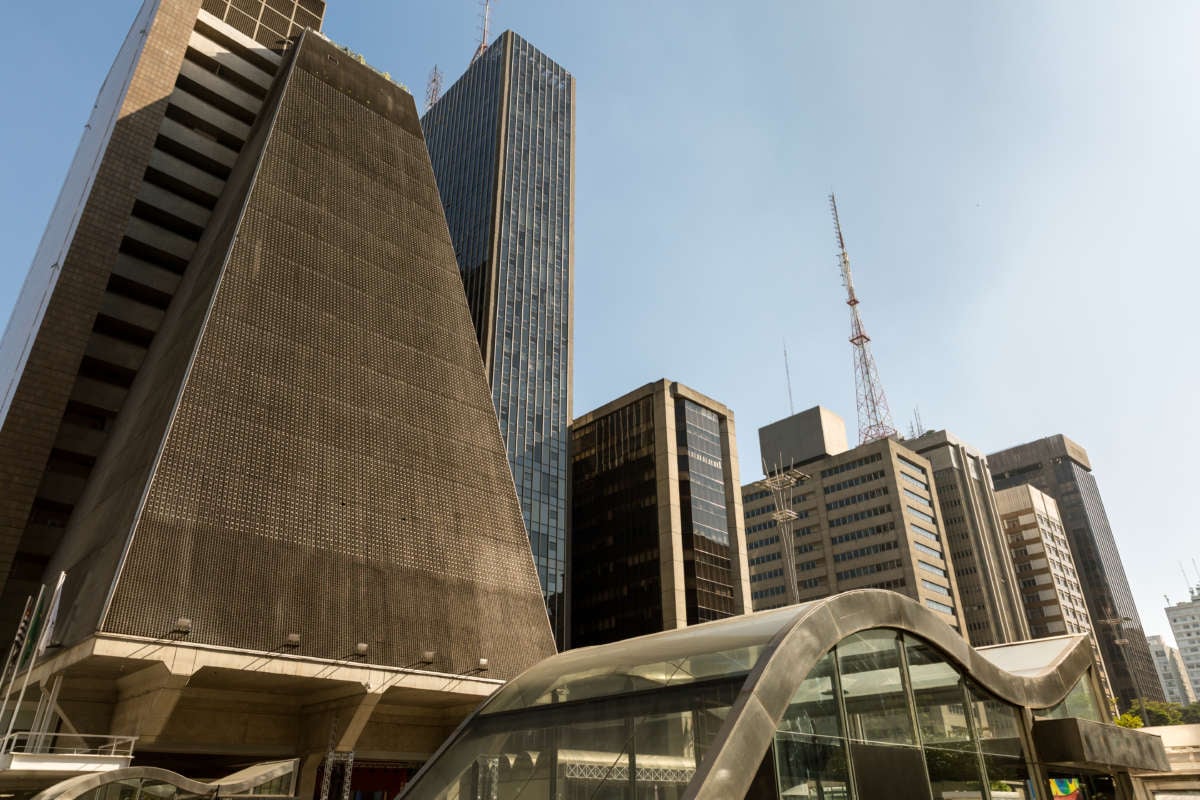Part of the Series
Religion's Role in the Struggle for Justice
A significant part of Afro-Brazilian history is located in museum collections — not always open to the public — formed by objects seized during the aftermath of slavery. Since Black practices like capoeira, samba, and certain religious practices were violently persecuted and criminalized at the turn of the 19th to 20th century, sacred objects ended up in the basements of police stations. This process went along with demonizing discourses and representations which connect to all kinds of violent persecutions that have never ceased, including cases of anti-Black state violence and discrimination that seem to be rising every day in Brazil.
For years, Black movements in Brazil have been claiming autonomy over the use and ways of displaying these objects seized in the aftermath of slavery. A recent example is the “Liberte Nosso Sagrado” (Free our Sacred) campaign based in Rio de Janeiro, which achieved the restitution of some stolen objects on September 21, 2020. Other movements have been taking place throughout the country. What these campaigns have in common is an urge to find a solution that respects the autonomy and self-determination of Afro-Brazilian communities concerning their own history. A key example is the case of the Nagô candomblé communities in the city of Recife, in Brazil’s northeastern Pernambuco state.
Afro-Brazilian religions can be roughly defined as the worship of African gods in Brazil. It is organized in communities based in sacred yards/religious houses known as terreiros, led by high priestesses or priests referred to as mães and pais-de-santo (mothers and fathers-of-saint, like “Mãe Lucia” or “Pai Adão”). Its religious practices involve initiation rituals, mediunic trance and animal sacrifices. The gods, known as Orixás, are worshiped through assentamentos, sacred objects (usually a recipient containing a certain set of ingredientes, including the otás, sacred river pebbles) where offerings are made. These objects are kept in sacred rooms called pejis, arranged according to the mythical dispositions of the Orixás. The peji is usually kept protected from the curiosity of external people; these are spaces of secrecy, commonly reserved to the initiated. Besides linking people and divinities, these objects are sources of axé, a force that sustains both people and houses in the Nagô candomblé religious system. It is where an Orixá — which is an active force — can exist/reside. An assentamento is a living thing that must be cared for, taken care of and maintained by the community, and therefore should be treated as much more than a mere set of objects, but rather as an element that constitutes and reverberates throughout the entire community.
Thus, these objects are constitutive of the relationship between people and divinities and manifest the bond between an initiated person and their Orixás. These objects hold a singular importance for the members of these communities, and their removal — via police repression other forms of state violence — and conversion into museum collections is intrinsically violent. This stealing of sacred objects and installation of them within museums was, clearly, done without input from the communities affected. Now, movements are working to reclaim these objects and place them in more appropriate spaces.
In Pernambuco, Brazil, several terreiros were attacked in the early 20th century, in just one instance of state repression of Afro-Brazilian religions. Police removed some of their ritual objects from their homes and arrested some religious practitioners. They also destroyed sacred objects. These actions were exposed in the press. Subsequently, in 1938, some of the sacred objects, which were temporarily stored in police stations, were given to Mário de Andrade’s Mission of Folkloric Research. The objects that came to compose the Mário de Andrade Collection are currently housed in the São Paulo Cultural Center (CCSP). The recent acknowledgement by the state of the violence of this period motivated the creation of the project “Digital Repatriation of the Afro Pernambuco Collection under the custody of the São Paulo Cultural Center” in November 2017, at the Museu da Abolição (Abolition Museum) in Recife, an event attended by representatives of several religious houses from Recife and Olinda, who performed some of their sacred chants there. Olavo — one of the coauthors of this article — was also present.

One of the groups invited to the opening of the museum’s exhibition was the Ilê Iemanjá Ogunté, a house descendant of the oldest candomblé of Recife, the Ilê Oba Ogunté, Sítio de Pai Adão. Since its founding in the 1980s, the terreiro has been run by the Felipe da Costa family, descendants of Felippe Sabino da Costa, better known as Pai Adão. Currently the terreiro is led by Maria Lucia Felipe da Costa Nascimento, better known as Mãe Lucia, an important religious and political leader of the religious communities of African origin. This terreiro, one of the main maintainers of the tradition of the Nagô candomblé, also had sacred ancestral objects seized.
The Abolition Museum is located at Madalena Mill, which was the former residence of the abolitionist João Alfredo. Among the pieces that compose its collection are objects that represent the colonial dyad of “masters and slaves.” Household objects and pieces of furniture are displayed along with objects of religious use that were donated to the museum. For many in the terreiro, when they attended the opening event of the exhibition, it was the first time they had entered a museum. And it was the first time that the sacred chants of the Afro-Brazilian religions of Recife echoed in the museum.
The event was attended by members of other terreiros in Recife and Olinda, such as Casa Xambá, represented by its priest, Pai Ivo de Oxum. Before the opening, the delegation from the terreiros visited the museum’s facilities and permanent exhibits. In the first stage, the exhibition displayed objects connected to the cosmology of candomblé. Mãe Lucia found herself in front of a large piece on display. One of her nephews asked if it was an Exu otá (sacred stone), a divinity of communication and paths. She reflected for a few moments and said, “This is not Exu. This is Obaluaye (divinity of disease and health). I know him. If he is not the same, he is very much similar to the one that was from Sítio de Pai Adão.” What for the museum is an indeterminate object that speaks of a historical memory, a curiosity to be exhibited to the public, for the mother-of-saint is an entity that carries personal, ritual, sacred and affective relationships deeply connected to a whole collectivity.
The group was then invited to the virtual exhibition of the objects seized by the police and under the custody of the Mário de Andrade collection. In a dark room, the group watched a display of 3D images of the 400 digitalized pieces of the collection. The disappointment of those present was noticeable. They wanted to see the pieces themselves — not representations. One priest said that he wanted to see the pieces so he could identify which ones belonged to his family and take them back home. Pai Ivo recognized a set of ngomas (percussion instruments) and said, “These were from home, these are from Xambá!” Mãe Lucia agreed and stated that the right thing would be to return the objects: “I myself want to take home those that I recognize. Many things from my family were taken away…. My grandfather’s Xangô [orixá of justice] and his Ifá [divinity of divination] were taken away. Anyway, I take care of these other sacred objects that were left without a home, if not to return to peji, the terreiros themselves can create a space and we keep them, take care of them. The important thing is to have them back.”
One of the CCSP representatives responded by arguing that the institution was in possession of the objects for a long time and had the required technical resources to preserve the objects. Perhaps, this representative suggested, they could arrange for an itinerant project that would take the 3D virtual versions of the objects to the terreiros. Mãe Lucia replied that preservation would not be a problem if the objects were returned. She noted that many of the sacred objects in her peji are more than 100 years old and are still well cared for by the family. Clearly, the terreiro members who attended the event were not very happy with the solution offered. On the way home, Mãe Lucia stated, “That was really our Obaluaye, the one belonging to our family.”
There is now a growing movement from the povo de santo, as the Afro-Brazilian religious community is also known, in Brazil to reclaim sacred objects and collections from museums. The collectives leading that movement are advocating for various goals, depending on the situation. Sometimes, they’re demanding that objects be relocated for use in religious communities’ own memorials, or for ritual use. In other cases, they’re advocating for a change in the way these objects are stored and used in exhibitions, taking into account the practitioners’ perspective.
While museum curators may express concern about using the “appropriate techniques” to take care of these objects, the question of what it means to care for them looks very different from the standpoint of the povo de santo. Because, for them, these objects are much more than historical artifacts.
The possibility of a more respectful relationship between museums and the povo de santo depends on museums’ willingness to take seriously the meaning of these objects — and the consequent care they demand — for their true owners: in historical, affective and ritual terms. In many cases, taking that significance seriously would mean returning the objects to their communities.
Join us in defending the truth before it’s too late
The future of independent journalism is uncertain, and the consequences of losing it are too grave to ignore. To ensure Truthout remains safe, strong, and free, we need to raise $27,000 in the next 24 hours. Every dollar raised goes directly toward the costs of producing news you can trust.
Please give what you can — because by supporting us with a tax-deductible donation, you’re not just preserving a source of news, you’re helping to safeguard what’s left of our democracy.
